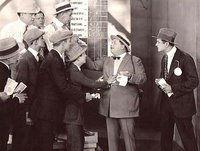 nancy herther, the minnversity’s fine sociology librarian, prepared this handy report comparing searches of sociological abstracts with those of criminal Justice abstracts.
nancy herther, the minnversity’s fine sociology librarian, prepared this handy report comparing searches of sociological abstracts with those of criminal Justice abstracts.
for crim researchers, the upshot is that we might miss an important article if we only search criminal Justice abstracts. ms. herther gives a few examples from the journal criminology to show potential gaps in cja coverage.
here’s her accompanying note:
I had mentioned some time ago about the work that I did a year ago – first comparing journals lists, etc. – between Sociological Abstracts and Criminal Justice Abstracts. In general they are both wonderful databases, however I always felt somewhat “twitchy” about CJA, so I pursued it by looking at specific issue by issue coverage and prepared a brief report of what I found – and my recommendations for secondary research – which is attached. CJA is a wonderful database, but at an advanced level, I’d strongly encourage faculty and students to use both SA and CJA to guarantee comprehensiveness. I’d hate to have anyone miss something significant.





